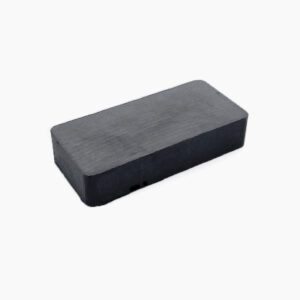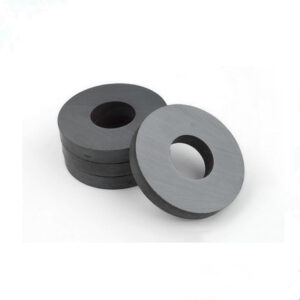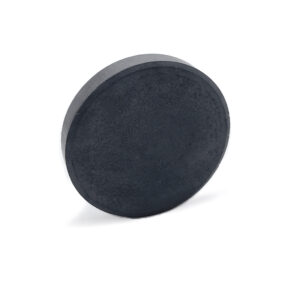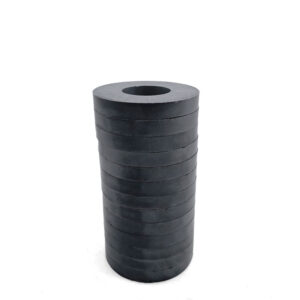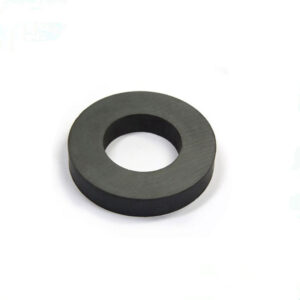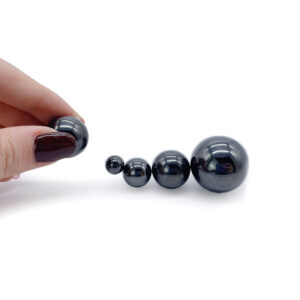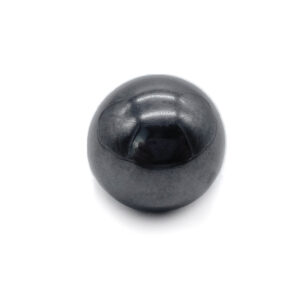Ferrite Magnets Manufacturer in China
Precision-engineered ferrite magnets for automotive, electronics, and industrial applications. 19+ years of innovation in magnetic solutions with uncompromising quality and reliability.
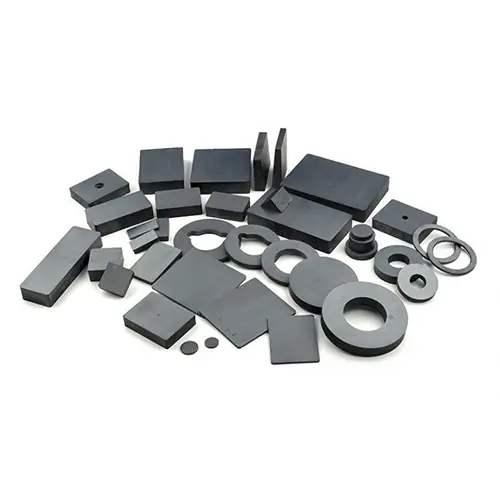
Brief Introduction of Permanent Ferrite Magnet
Ferrite magnet is a non-metallic permanent magnetic material developed in the 1940s, composed of Fe2O3, BaO or SrO. Because its preparation process and appearance are very similar to ceramic products, it is sometimes called Ceramic magnet. Compared to metal magnets, Ferrite magnets have lower magnetic energy but are more resistant to demagnetization. Since Ferrite is mainly made of oxides, it is highly resistant to corrosion and oxidation.
Relatively low raw material cost and simple production process make Ferrite magnets occupy the largest market share among all kinds of magnets. As one of the most cost-effective magnetic materials, ferrite magnets are widely used in various industrial applications such as refrigerators, speakers, and small electric motors.
Technical Specifications Range
Remanence (Br)
200-400 mT
millitesla
Coercivity (Hc)
140-280 kA/m
kiloampere/meter
Energy Product (BHmax)
6.5-35 kJ/m³
kilojoule/m³
Curie Temperature
450°C
celsius
Operating Temperature
-40 to +250°C
celsius
Density
4.8-5.2 g/cm³
grams/cm³
Step-by-Step Manufacturing Process of Ferrite Magnets
1. Raw Material Preparation
The foundation is high-purity raw materials: iron oxide (Fe2O3, about 80-90%), strontium or barium carbonate (10-20%), and minor additives like silica or calcium oxide for enhanced properties.
- Materials are weighed precisely and often pre-milled to ensure uniformity. Impurities are removed to prevent defects in the final magnet.
- For strontium Ferrite (more common and stronger), SrCO3 is the key additive.
This step sets the stage for a consistent chemical composition, crucial for magnetic performance.
2. Mixing and Calcination
The powders are wet-mixed in a ball mill with water to form a slurry, ensuring even distribution.
- The slurry is dried and then calcined (pre-sintered) in a rotary kiln at 900-1,200°C for 1-2 hours. This decomposes carbonates and forms the ferrite phase (e.g., SrFe12O19).
- Calcined material is crushed into coarse particles, creating a “clinker” ready for finer processing.
Calcination drives off volatiles and initiates the magnetic compound formation—think of it as baking the “dough” for your magnet.
3. Fine Milling and Powder Refinement
The calcined clinker is ball-milled again (wet or dry) to reduce particle size to 0.5-2 microns, producing a fine powder.
- Additives like dispersants or binders may be included to improve flow.
- For anisotropic magnets, the powder is aligned later, but here it’s prepared for pressing.
This ultra-fine powder ensures dense compaction and optimal sintering.
4. Pressing and Compaction
The powder is compacted into shapes using hydraulic presses under 100-500 MPa pressure.
- Dry pressing (with binders) or wet pressing (in slurry form) is used for shapes like blocks, rings, or arcs.
- For anisotropic Ferrites, a magnetic field (up to 10,000 Oe) is applied during pressing to align particles, enhancing magnetism in one direction.
The “green” compact is fragile but holds the desired form, with densities around 50-60%.
5. Sintering
The green parts are sintered in a tunnel or box furnace at 1,100-1,300°C for 1-4 hours in an air or controlled atmosphere.
- This fuses particles into a solid ceramic, achieving 90-95% density.
- Slow cooling prevents cracking, and the process refines the crystal structure for peak coercivity.
Sintering is the heart of the process, transforming powder into a hard, permanent magnet.
6. Machining, Magnetization, and Testing
Ferrites are brittle, so machining uses diamond grinding or ultrasonic tools for final shaping and smoothing.
- The magnet is magnetized in a strong electromagnetic field to align domains.
- Quality testing measures properties like remanence (Br), coercivity (Hc), and energy product using permeameters. Visual inspections check for cracks or uniformity.
Optional coatings (e.g., paint) add protection, and the magnets are ready for use!
Our Products
-
Custom Ferrite Block Magnet 48x22x10mm
-
Custom Ferrite Disc Magnet D10x5mm
-
Custom Ferrite Ring Magnet D53xd24x11mm
-
Ferrite Disc Magnet D70x12.5mm CUSTOM
-
Ferrite Ring Magnet D36xd22x8mm for Loudspeaker
-
Ferrite Ring Magnet D68xd32x8mm for Loudspeaker
-
Ferrite Ring Magnet Speaker D70xd32x15mm
-
Ferrite Sphere Ball Magnet D5, D10, D15, D20, D25, D30mm
-
Ferrite Sphere Magnet D30mm Magnet Ball
Get In Touch
Join hundreds of satisfied customers who trust HS Magnet for their critical magnetic applications.
Contact our expert team for technical consultations, custom solutions, or product inquiries

